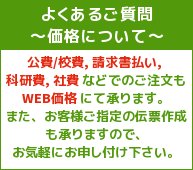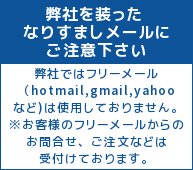An Introduction to Python Programming for Scientists and Engineers
◆JpGU2025 セール開催中!:2025年6月30日(月)ご注文分まで
※上記表示の販売価格は割引適用後の価格です 出版済み 3-5週間でお届けいたします。 Author: Lin, Johnny Wei-Bing / Aizenman, Hannah (City College, City University of New York) / Manette Cartas Espinel, Erin / Gunnerson, Kim / Liu, Joanne Publisher: Cambridge University Press ISBN: 9781108701129 Cover: PAPERBACK Date: 2022年07月 こちらの商品は学校・法人様向け(機関契約)のオンラインブック版がございます。 オンラインブックの価格、納期につきましては弊社営業員または当ECサイトよりお問い合わせください。  DESCRIPTION Python is one of the most popular programming languages, widely used for data analysis and modelling, and is fast becoming the leading choice for scientists and engineers. Unlike other textbooks introducing Python, typically organised by language syntax, this book uses many examples from across Biology, Chemistry, Physics, Earth science, and Engineering to teach and motivate students in science and engineering. The text is organised by the tasks and workflows students undertake day-to-day, helping them see the connections between programming tools and their disciplines. The pace of study is carefully developed for complete beginners, and a spiral pedagogy is used so concepts are introduced across multiple chapters, allowing readers to engage with topics more than once. “Try This!” exercises and online Jupyter notebooks encourage students to test their new knowledge, and further develop their programming skills. Online solutions are available for instructors, alongside discipline-specific homework problems across the sciences and engineering. *Deviates and improves upon the traditional computer science-centric approach of teaching Python to science and engineering students *Chapters lead with practical examples from across the sciences and engineering, helping students connect programming tools with real tasks *Concepts are introduced across multiple chapters, allowing readers to engage with topics numerous times *Introduces software engineering tools and the best-practices used by professional developers in Part IV, to prepare students for writing their own high-quality code *Online digital resources include numerous Jupyter notebooks, 'Try This!' exercises, student homework problems, and solutions for course instructors TABLE OF CONTENTS Part I. Getting Basic Tasks Done: 1. Prologue: Preparing to Program 2. Python as a Basic Calculator 3. Python as a Scientific Calculator 4. Basic Line and Scatter Plots 5. Customized Line and Scatter Plots 6. Basic Diagnostic Data Analysis 7. Two-Dimensional Diagnostic Data Analysis 8. Basic Prognostic Modeling 9. Reading In and Writing Out Text Data 10. Managing Files, Directories, and Programs Part II. Doing More Complex Tasks: 11. Segue: How to Write Programs 12. n-Dimensional Diagnostic Data Analysis 13. Basic Image Processing 14. Contour Plots and Animation 15. Handling Missing Data Part III. Advanced Programming Concepts: 16. More Data and Execution Structures 17. Classes and Inheritance 18. More Ways of Storing Information in Files 19. Basic Searching and Sorting 20. Recursion Part IV. Going From a Program Working to Working Well 21. Make it Usable to Others: Documentation and Sphinx 22. Make it Fast: Performance 23. Make it Correct: Linting and Unit Testing 24. Make it Manageable: Version Control and Build Management 25. Make it Talk to Other Languages

|
||||||||||||||||||||||||||||||||||||||||||||||||
























